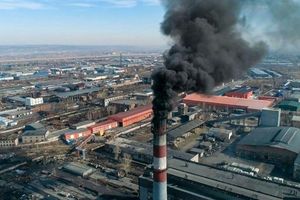On Wednesday morning, September 10, 2025, Cuba was plunged into darkness yet again as the island endured its fifth nationwide blackout in less than a year, a stark sign of a deepening energy and economic crisis. The blackout, which began just after 9 a.m. local time, was triggered by a malfunction at the Antonio Guiteras thermoelectric power plant in Matanzas, the largest of Cuba’s eight oil-fired power stations. The Ministry of Energy and Mines announced on social media that a “complete shutdown of the national electricity grid” had occurred, citing an erroneous overheating warning that disconnected the plant and set off a cascade of failures across the grid.
This latest outage follows a string of similar incidents: three other full blackouts were reported late last year, and just days before, a transmission line failure left several eastern provinces from Las Tunas to Guantánamo in the dark for hours. The government’s own figures admit that since last October, the grid has collapsed at least four times, sometimes leaving the country without power for days as engineers struggled to reconnect the system.
As the blackout unfolded, the Ministry of Energy and Mines and the state-run National Electric Union (UNE) scrambled to restore basic services. Engineers began building a so-called “microsystem” to prioritize electricity for hospitals, food production plants, and other essential infrastructure. By Thursday, September 11, power had been restored to 11 of Cuba’s 15 provinces, with the Cuban Electric Union reporting that 79.4 percent of households in Havana—home to two million residents—had electricity again after nearly 24 hours of blackout. “The SEN (National Electric System) has been reconnected, with restoration still pending” in four provinces, the company posted on X, the social platform formerly known as Twitter.
Prime Minister Manuel Marrero made a rare public appearance at the headquarters of the state-run power company, appearing on state TV to ask Cubans for patience and trust. “Electricity will be restored gradually,” he promised, while also noting that engineers had a “well-defined strategy to face this situation.” His remarks were echoed by the director of the Guiteras power station, who explained that “an overheated steam false signal caused the boiler’s automatic system to be disarmed, and thus the power plant to exit” the grid. The government’s assurances, however, did little to calm the nerves of ordinary Cubans, many of whom have grown weary of the repeated outages.
Havana, usually bustling, was eerily subdued during the blackout. Traffic lights were dark, and many social and cultural activities were suspended. Residents rushed to buy bread and basic goods before nightfall, worried about food spoilage and water shortages—pumps that supply water to apartments rely on electricity. “If you buy something, you don’t know if you’ll be able to keep it. Many people’s food has spoiled,” 65-year-old Mayté García told the Associated Press. Another resident, Katie Cárdenas, said she ventured out to get bread, fearing she’d be left without basic supplies. The city’s internet service slowed to a crawl or dropped out entirely in some neighborhoods, further complicating daily life.
For some, the blackouts have become a grim routine. “I have a small power plant... but many people are complaining because they will be affected,” said Aurelio Chacón, 65, as quoted by the Associated Press. Others, like Ernesto Gutierrez, have had to adapt their lives to the new normal: “We’re cooking with wood and charcoal, so we have to adjust our schedules. It’s complicated, stressful, and frustrating, too,” he told Al Jazeera. The persistence of outages has led wealthier households, small business owners, and those with relatives abroad to install solar panels or rechargeable devices to weather the darkness.
But for most Cubans, there’s little choice but to wait and hope for the lights to return. “We just have to wait. There’s no other choice,” said Danai Hernandez, who left work early to prepare her home for the blackout, as reported by Al Jazeera. The repeated failures have sparked rare anti-government protests, especially in Santiago, the island’s second-largest city.
The roots of Cuba’s energy crisis run deep. The country’s aging infrastructure—some power plants are more than 40 years old—has been neglected for decades, with maintenance often deferred due to a lack of spare parts and investment. The economic situation has been further aggravated by acute fuel shortages and U.S. sanctions, which limit Cuba’s access to foreign currency and make it difficult to import fuel or repair equipment. The government blames these sanctions for much of the crisis, pointing to restrictions on oil shipments from Venezuela and a broader embargo that has choked off financial resources.
Despite these challenges, shipments from Venezuela continue, albeit at a slower pace due to Venezuela’s own production woes. In an effort to plug the gap, the left-leaning Morena government in Mexico has stepped in, with Pemex—the Mexican state oil company—sending over $1 billion in subsidized oil to Cuba between July 2023 and September 2024, and an additional $850 million between May and June 2025, according to a Mexican civil society investigation. Meanwhile, a Chinese-funded project to install more than 50 solar farms on the island is underway, with the goal of eventually generating up to half of Cuba’s electricity demand. However, progress has been slow and the impact has yet to be felt by most Cubans.
To further bolster the grid, Cuba has rented floating Turkish power ships and installed generators fueled by crude oil. But even these stopgap measures have run into trouble: earlier this year, two Turkish-owned power ships supplying energy to Cuba departed due to unpaid bills. The country’s military-run conglomerate GAESA reportedly held large dollar reserves last year that could have been used to update the energy infrastructure, but these funds have not been deployed to ease the crisis, according to a Miami Herald investigation.
The consequences of the ongoing blackouts are felt in every corner of Cuban society. Schools and workplaces were forced to close for two days in February 2025 due to electricity shortages. The outages have crippled the economy, disrupted tourism, and left millions of Cubans struggling to preserve food, access water, and maintain any semblance of normalcy. As the crisis drags on, the patience of the population is wearing thin, and the government faces mounting pressure to find lasting solutions before the next blackout strikes.
For now, as Cuba’s battered grid sputters back to life, residents brace for more uncertainty, hoping that the next time the lights go out, it won’t be for long.





